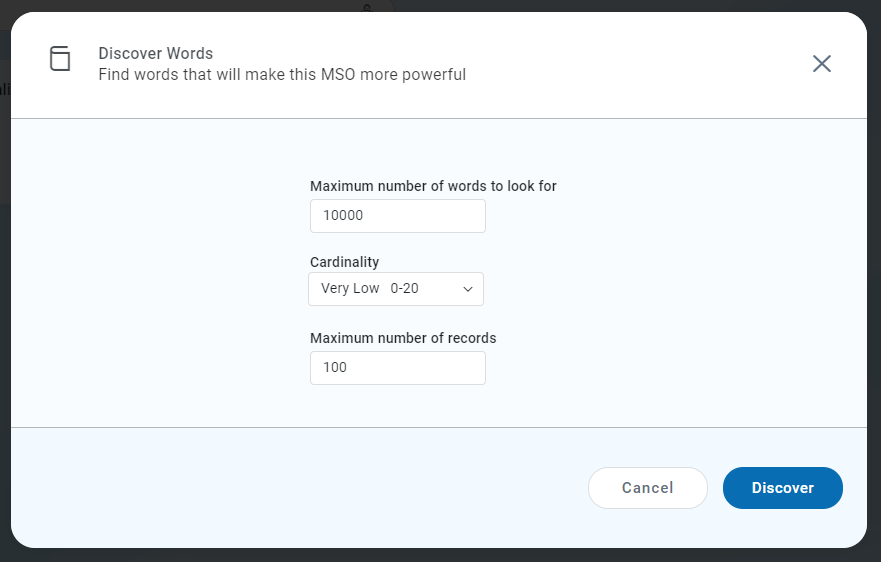Discover Words for Ontology
Intended audience: END-USERS ANALYSTS DEVELOPERS ADMINISTRATORS
AO Platform: 4.3
Overview
With an Ontology created and Statistics generated for the Ontology, additional discoveries can be done that will enrich MSOs in a variety of ways. This topic describes how to configure and discover Words that can be used when users ask Natural Language Questions (NLQs) in Easy Answers. The result of this discovery process will be shown as Suggestions in the Show Suggestions option from the Action menu allowing users to either Accept or Reject the discovered options.
Discover Words
Discovering Words is the process of finding field properties in an MSO that have values that typically fall into some unique categories. As an example, in a “Meter” MSO, a field property “Material” may include only 5 unique values even across a million record data set, such as Plastic, Cobber, Bronze, Steel, and Composite. The Discover Words process with the configuration parameters will find such words and add them to the MSO as Linguistic properties. This means that when a user later on asks Natural Language Questions, these Words are now understood and the user can for example say: Show all bronze meters.
After configuring the Discover Words properties, the user will click the Discover button to initiate a background task. At the end of the process, one or more suggestions will be available to the user to either Accept or Reject in the Show Suggestions dialog available from the Action menu. See Showing Suggestions for Ontology.
Please note that the Discover Words process is depending on whether or not Statistics have been run. The dialog shown below will alert the user if Statistics haven’t been run and suggest running it first followed by the Discover Words process.
Notifications will be shown to the user for the Discover task. Additionally, the user can select View Task to keep an eye on the progress. See View Tasks for Ontology.

Properties
Label | UI Widget | Default | Description |
|---|---|---|---|
Maximum number of words to look for | Number | 100 | Maximum number of words the discovery process will consider. |
Cardinality | Dropdown | Very Low (0-20) | A measure used to identify the number range for the cardinality (unique values) used during the discovery process.
|
Maximum number of records | Number | 100 | Maximum number of records in the data source the discovery process will consider for finding unique words. |
